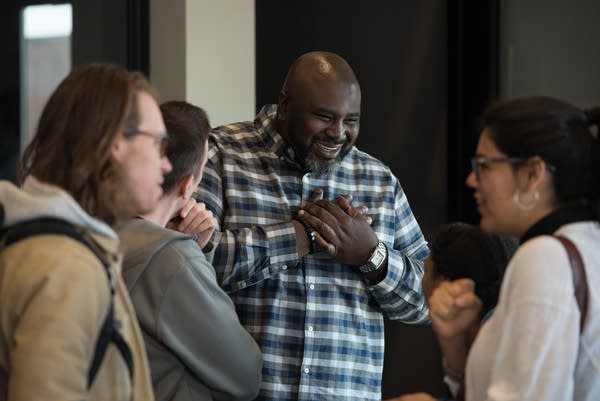At one Mpls. church, fighting segregation is gospel

Edrin Williams, pastor of equipping and formation, talks with people during a Sunday morning worship service at Sanctuary Covenant Church.
Angela Jimenez for MPR News
Go Deeper.
Create an account or log in to save stories.
Like this?
Thanks for liking this story! We have added it to a list of your favorite stories.


